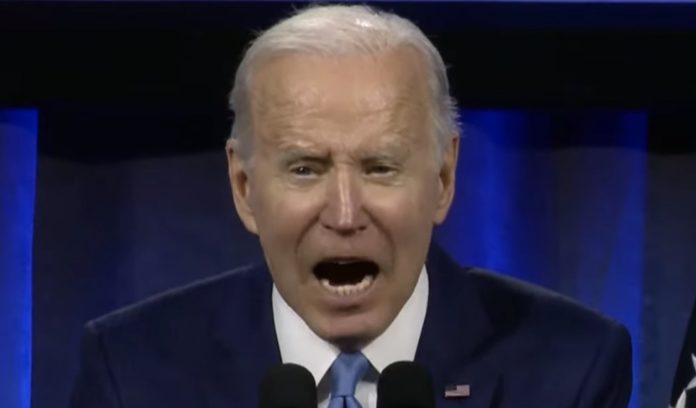OPINION | This article contains opinion. This site is licensed to publish this content.
The U.S. economy continues to struggle under the Biden administration as the Dow Jones Industrial Average fell below 30,000 for the first time since January 2021.
Skyrocketing inflation and an aggressive interest rate hike from the Federal Reserve are having a major impact on the market.
The Dow, which tracks 30 large public companies trading on American exchanges, hasn’t dropped this low since the time Biden entered office on January 20, 2021.
The U.S. economy shrank at an annualized 1.5% pace during the first quarter of 2022.
This severe drop may be the beginning of a recession. A recession is defined as two consecutive quarters of negative growth, according to the U.S. Bureau of Economic Analysis.
Numerous polls indicate that business leaders believe the economy will shrink further.
Over 59% of executives in the sector said inflationary pressures “make a recession more likely in the next 12 months,” according to the National Association of Manufacturers’ most recent Manufacturers’ Outlook Survey.
Over 90% of business leaders said higher raw material costs is one of their “primary business challenges.”
The Federal Open Market Committee, which oversees the Federal Reserve’s policy interventions, said, “Overall economic activity appears to have picked up after edging down in the first quarter. Job gains have been robust in recent months, and the unemployment rate has remained low.”
“Inflation remains elevated, reflecting supply and demand imbalances related to the pandemic, higher energy prices, and broader price pressures,” the statement continued.
More on this story via Daily Wire:
After steadily increasing to nearly 37,000 through 2021, the Dow has since plummeted due to several economic headaches — including record inflation rates, persistent supply chain bottlenecks, and the Russian invasion of Ukraine. On Thursday afternoon, the index sank below 29,900 — reflecting a roughly 19% plummet from its peak in early 2022.
Most recently, the Consumer Price Index (CPI) increased 8.6% year-over-year as of May, surpassing economists’ expectations. The Producer Price Index (PPI), which monitors inflation for wholesalers, increased 10.8% over the same period.
The Thursday selloff was induced by the Federal Reserve announcing that it would hike interest rates by 0.75% in the boldest monetary policy action since 1994. The central bank already increased rates by 0.5% in May — the largest such increase since 2000 — after a 0.25% rate hike from near-zero levels in March.
Rate hikes are meant to discourage further price level increases and signal to investors that central bankers are serious about battling inflation, but they carry the side effect of increasing borrowing costs for businesses and consumers — thereby dampening economic activity…
— Advertisement — The yield curve — which tracks the relationship between bond maturity and expected interest rates — inverted earlier this week in a sign that the economy is bound for a recession. Normally, a bond with a more distant expiration will have a better interest rate — but with an inverted yield curve, short-term interest rates are higher than long-term ones, reflecting a looming rate increase in the near future.







